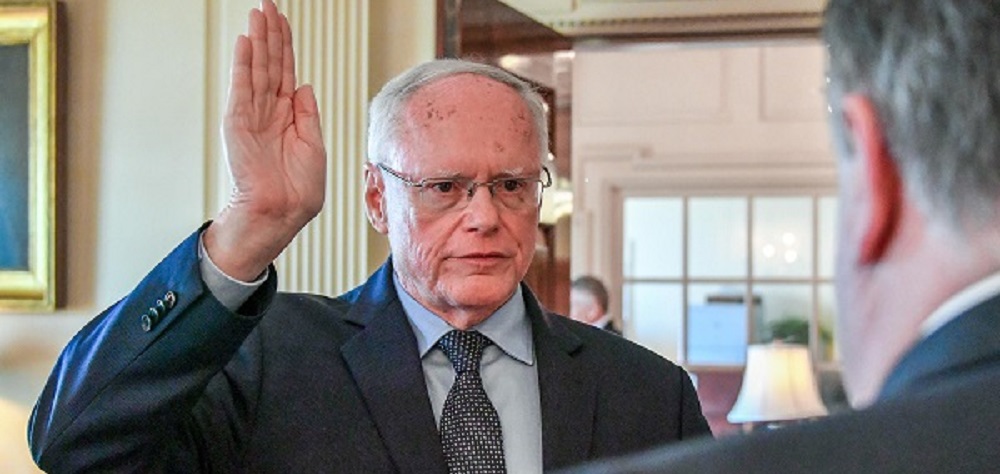Alwaght- Since being elected as the US president in 2017, Donald Trump kept insisting that he wants to put an end to his country’s involvement in “endless wars” and crises in the West Asia region and he would soon withdraw his forces from the region. On occasions, Trump even talked of exit from Syria, though facing strong objection from his administration officials in the State and Defense Departments. However, these days, Washington’s Syria policy seems to be undergoing deep changes strategically.
The US special envoy for Syria James Jeffrey, who also is the White House representative to the US-led Western coalition in Syria, these days stepped up his activism in northeastern Syria more than any other time, moving back and forth between Iraq and Syria. The key aim of his movement is definitely Syria. But does he seek behind his Syria-related activities? Washington appears to seek two goals behind the intensified movement in northern and northeastern Syria:
Preventing Russia’s power gain in northern Syria using constant crisis strategy
The US behavior since the eruption of the Syrian crisis in 2011 has borne proof of the fact that the White House has had no strategic plans to stay and act in the Syrian ground equations. Even if in the current conditions the Americans wish to get a permanent toehold in Syria, they certainly are devoid of the capability and instrument vital for their stay, as they know that in the near future the central Syrian government will take back under its control all of the country’s territories and the foreign actors have to leave the Arab country forever.
But the question is how effective are the recent American moves in strengthening its position in Syria’s northeast readable? In this relation, it should be taken into account that the US fundamental aim in Syria is the continuation of the crisis and imposition of costs on the rival actors, specifically Russia as a staunch ally of the Syrian government whose direct military intervention in 2015 turned the tide in favor of Damascus. The Americans are now severely worried about Russia prospectively cementing its position in the Kurdish-controlled regions in the northeast.
That is pushing Washington to adopt a new policy, all to prevent Moscow from building its entrenchment there. Three policies are simultaneously followed to this end: First, Jeffrey with his declaration of support to the intra-Kurdish peace seeks to maintain the Syrian Kurds as the US allies and block their drift towards Russia as a game-changer in the Syrian equations. Second, over the past few months, the US reached oil agreements with the Kurdish forces, mainly the Syrian Democratic Forces (SDF). The motivation behind the oil deal is that Washington wants to tell them that it intends to help them improve economically for the better running of regions under their control. Third, recently the Americans have deployed radar systems and armored vehicles to Hasakah. Reports suggest that 100 new troops, 6 M2A2 Bradley tanks and Sentinel short-range radars were also deployed last week to the north. The key intention behind these three measures is that Washington wants to on the one hand win the trust of the Kurds and on the other hand maintain the state of crisis, all to prevent Russian power gain in this part of Syria.
US clear message to Turkey
A recent visit to the Iraqi Kurdistan region of Jeffery and meeting with the former president of the autonomous region and the head of the ruling Kurdistan Democratic Party (KDP) Masoud Barzani along with making efforts to broker a peace deal among the Kurds very transparently send a message to the Turkish leaders.
Since 2011, Turkey has never stopped complaining about the presence in the Syrian Kurdish power structure and also battleground equations of the Democratic Union Party (PYD) and also labeled it the Syrian branch of the Kurdistan Workers Party (PKK) that is blacklisted as a terrorist group by Ankara. After 2014, the US brought under its air cover all of the Kurdish militias aligned with the PYD, stirring ongoing protests from Turkey. Under the new conditions, the Americans want to make the Kurds even stronger on the strength of return of the “Peshmerga Rouge” paramilitary forces. Jeffery wants to bring 8,000 Peshmerga forces trained in Iraqi Kurdistan by KDP to Syria and position them along with People’s Protection Units (YPG) and Women’s Defense Units (YPJ) to guard the northeast.
The US is pursuing this aim as Turkey in the past few months has been in tensions with Greece, Cyprus, and the Israeli regime over a set of cases like exploration for energy resources and patrolling in the Mediterranean Sea. Additionally, Ankara is one of the key opponents of the Arab-Israeli normalization, as well as the US’s “deal of the century” initiative which wants to recognize the Israeli occupation and reject the Palestinian refugees’ right to return home. Now, it appears that Washington eyes a signal to Ankara, telling it that it will maximize support to the Syrian Kurds in response to its tensions with the US allies in the Mediterranean.
Despite these two goals behind the fresh American activism in northeastern Syria, a picture of the US future place in Syria should bear the fact that Washington has no replacement to accepting the legitimate Syrian government and pulling its forces out of the Arab country. As Trump more than once outlined, the US has no plan for a long-term stay and even if it has the plan, it lacks the power and ground to stay. Seemingly, the White House strategists are only focusing on wasting time and foisting costs on the rival players involved in the crisis. Meanwhile, the reliance of the Syrian Kurdish groups on the US represents a strategic mistake and at the end of the road will yield nothing but defeat for them.



























